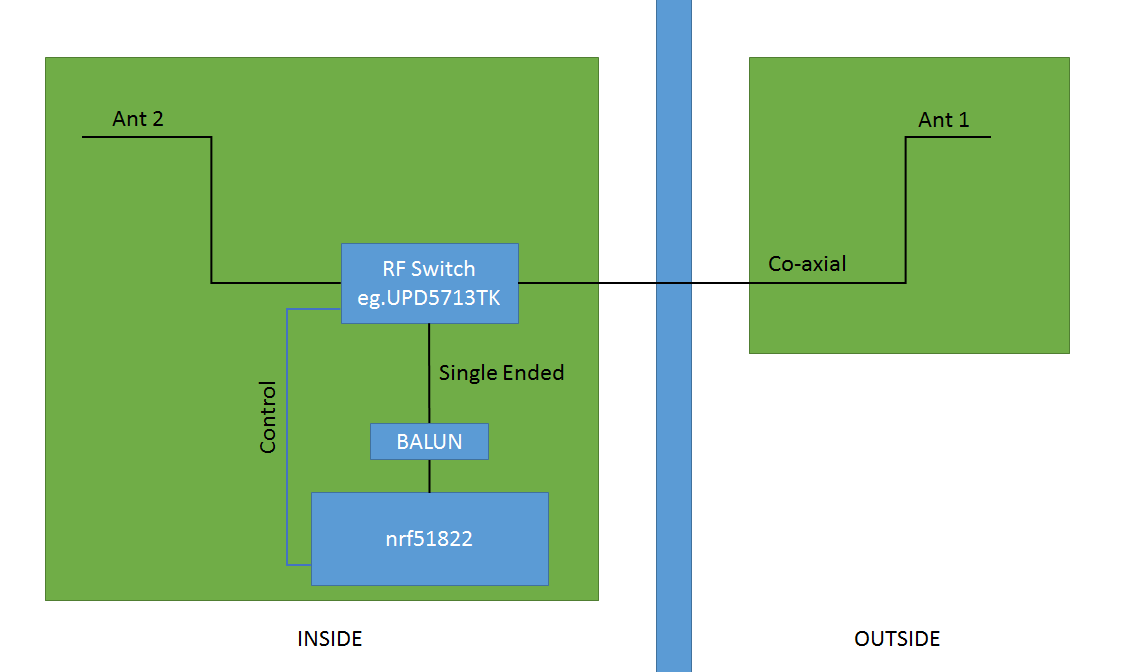I am working on a device where i need to sense proximity of a smart phone and then judge its exact position and then take action depending on the position. Below is my theoretical solution...

the two antennas in the diagram can be switched using a RF switch and then RSSI values can be measured from the two antennas and after comparing the value an estimate can be made about the position of the smart phone.The antenna rf pattern is such that there is a difference RSSI values when measured from outside or inside for an antenna.
I want to know if this technique will work or any suggestions and is there any support in the BLE soft devices for such a technique?


